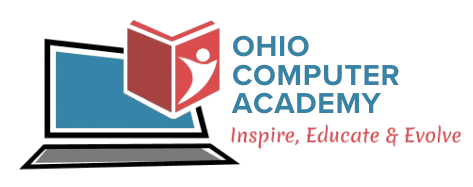Data science involves using data to find patterns, make predictions, and help make better decisions. It combines skills from statistics, computer science, and domain knowledge to analyze and interpret complex data.
This course provides a comprehensive introduction to data science using Python. You’ll start with Python basics and explore key libraries used in data science. The training covers essential concepts in statistics and probability, data pre-processing techniques, and effective data visualization methods. You’ll also learn how to develop and evaluate machine learning models to extract valuable insights from your data. Ideal for anyone looking to build a solid foundation in data science.
Launch your career in Data Science by developing in-demand skills and become job-ready in 30 hours or less.
Highlights
Upgrade your career with top notch training
- Enhance Your Skills: Gain invaluable training that prepares you for success.
- Instructor-Led Training: Engage in interactive sessions that include hands-on exercises for practical experience.
- Flexible Online Format: Participate in the course from the comfort of your home or office.
- Accessible Learning Platform: Access course content on any device through our Learning Management System (LMS).
- Flexible Schedule: Enjoy a schedule that accommodates your personal and professional commitments.
- Job Assistance: Benefit from comprehensive support, including resume preparation and mock interviews to help you secure a position in the industry.
Key Learnings
- Master the fundamentals of Python programming, including syntax, data types, operators, and control flow structures, which form the foundation for coding in data science.
- Learn to use the Pandas library for data manipulation, including data cleaning, transformation, and handling missing values.
- Gain proficiency in using NumPy for numerical operations and array manipulations. Understand how to perform complex mathematical computations efficiently.
- Explore various data visualization libraries, such as Matplotlib, to create informative graphs and charts that effectively communicate data insights.
- Understand key statistical concepts and techniques, including descriptive statistics, hypothesis testing, and probability distributions, essential for analyzing and interpreting data.
- Get acquainted with machine learning concepts, including the difference between supervised and unsupervised learning, and explore algorithms like regression, classification, and clustering.
- Learn how to develop machine learning models, including training, testing, and evaluating model performance with metrics such as accuracy, precision, and recall.
Pre-requisites
- Basic Computer Skills: Participants should have a general understanding of using computers, including file management, navigating the operating system, and using web browsers effectively.
- Familiarity with Python: While prior programming experience is not required, a basic understanding of programming concepts using Python is beneficial. You can take our < Programming Essentials using Python> course prior to this course.
- Basic Mathematics: A basic understanding of mathematics, particularly statistics, is helpful, as data science relies heavily on mathematical concepts and statistical analysis.
Job roles and career paths
This training will equip you for the following job roles and career paths:
- Data Scientist
- Data Analyst
- Machine Learning Engineer
- Data Engineer
- Business Intelligence Developer
Python with Data Science
The demand for the Python with Data Science course is influenced by several key trends in the tech industry and the job market. The demand for data scientists and professionals with data analysis skills continues to grow across various industries, including finance, healthcare, marketing, and technology. Organizations are increasingly leveraging data to drive business decisions. Data science roles are among the fastest-growing job categories, with positions for data scientists, analysts, and engineers being widely advertised. This creates a significant need for professionals with data science skills.
Certification
After the completion of the course and the exam, you will be awarded the course completion certificate.
Topics of Course
-
What is Data Science?
-
Collecting Data
-
Storing Data
-
Processing Data
-
Describing Data
-
Statistical Modelling
-
Algorithmic Modelling
-
How AI, ML and Data Science related
-
Why Python
-
Python Features
-
Installing Python
-
Python IDE
-
Jupyter Notebook
-
Google Colab
-
Basic Data types
-
Operators
-
Input/Output statements
-
Control Statements
-
Functions
-
Strings
-
List and Tuples
-
Dictionaries
-
File Handling
-
Exceptions
-
Object Oriented programming
-
NumPy (Numeric Python)
-
Pandas
-
Matplotlib
-
Scikit
-
What is Statistics
-
Quantitative and Categorical Data
-
Grouping and Displaying Data
-
Histogram/ Stem Plot/Time Plot
-
Summary Statistics
-
Measures of Centre
-
Measure of Spread
-
Outliers
-
Inter Quartile Range
-
Percentile
-
Box and Whisker Plots
-
What is Probability
-
Random Variable
-
Probability Distributions
-
Binomial Distribution
-
Poisson Distribution
-
Standard Normal Distribution
-
Density Curve
-
Symmetry and Skewness
-
Normal Distributions
-
68-95-99.7 Rule
-
Z-Score
-
Python Libraries for Pre-processing
-
Data Cleaning or Data Wrangling
-
Dealing with Missing Values
-
Data Formatting
-
Data Normalization
-
Binning
-
One-hot encoding
-
Introduction to Data Visualization
-
Matplotlib Pandas Integration
-
Histogram
-
Line Plot
-
Bar Charts
-
Area Plots
-
Pie Charts
-
Box Plots
-
Scatter Plots
-
Exploratory Data Analysis
-
Analysis of Variance
-
Positive and Negative Correlation
-
Pearson Correlation
-
Regression
-
Introduction to Scikit Library
-
Simple Linear Regression
-
Multiple Linear Regression
-
Model Evaluation
-
Prediction and Decision Making
-
What is Machine Learning
-
Supervised Machine Learning
-
Unsupervised Machine Learning
-
Recommender System
-
Deep Learning
Your Instructor
 Follow Me:
Follow Me:


 Follow Me:
Follow Me:
 Free
Free
 Free
Free
 Free
Free

